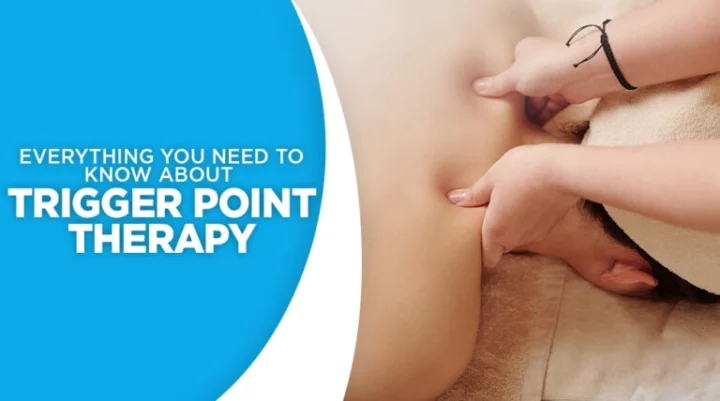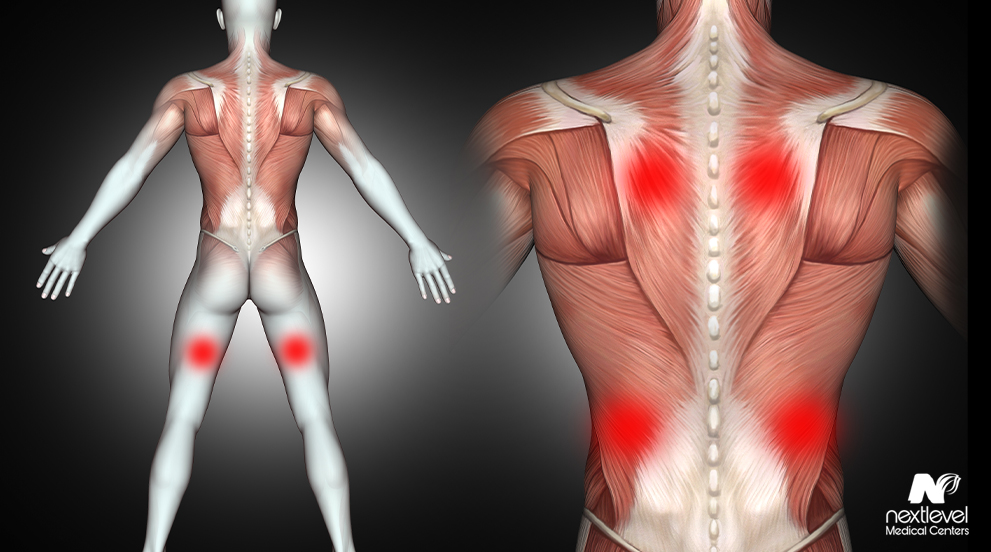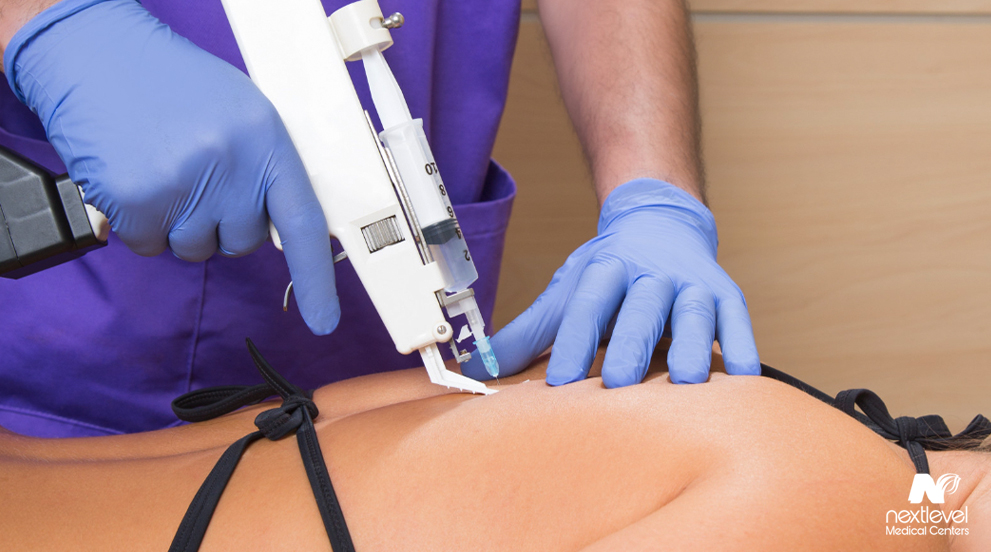

Physical ailments are an unfortunate reality of the human experience. Some injuries are more serious than others, but eventually, everyone goes through a period where their bodies are damaged. Such injuries are so common that they account for a large portion of modern visits to a doctor. The injuries that lead to such visits are numerous and extremely common.
It is the severity of the injury that determines what treatments are needed to alleviate the symptoms of your pain. The treatments needed to treat physical injuries are not always identical; some are more invasive than others. The more invasive treatments are generally reserved for injuries severe enough to prevent you from functioning. When such treatments are necessary, understanding them is critical.
One of the more interesting treatments for physical pain is trigger point therapy. Despite its benefits, the average person is not fully aware of trigger point therapy and how it is performed. You might have heard a reference to trigger point therapy at some point in your medical history. However, hearing about treatment and understanding it are very different concepts, and knowledge of trigger point therapy is unfortunately rare.
If you are considering trigger point therapy for any reason, it is essential to know everything you need to know about the procedure, so you do not suffer remorse.
Before we can understand trigger point therapy, we need to know what it is used to treat. The human body is not as simple as its outward appearance would suggest. We are a collection of nerves and organs piloted by a brain, with every part of our body designed to accomplish a specific goal. When our bodies are strained too much, it can cause significant damage that requires a particular set of treatments to repair. One of the issues that can arise from such strain is trigger points, which are the injuries for which trigger point therapy was created.
Trigger points are knots of muscle and nerves just under the skin that can range from painless to extremely painful. In addition, trigger points can cause a portion of the muscle to spasm, which is not a pleasant experience.

Trigger points can be divided into two categories. These categories are:
While we know what a trigger point is, there is no definitive information on what tissue causes us to feel them. There is also no modern answer to why some trigger points are painful and others are harmless. The current theory is that muscle and fascia tissue become tense enough to restrict blood flow, creating a metabolic crisis. While the evidence of this theory is not fully proven, it remains one of the most common theories.
Regardless of the type of trigger point you are dealing with, the pain they are capable of inflicting can be debilitating unless you address the issue as soon as possible. The development of trigger points has led to a need for a specific treatment designed to alleviate the symptoms the condition induces. The pain that some trigger points produce usually requires the touch of an expert capable of administering trigger point therapy.
Trigger points, a muscle knot, are not restricted to any body part and can form anywhere. So long as muscle tissue is present in that part of the body, it is feasible for a trigger point to develop. While it is theoretically possible for a trigger point to form on any part of your body, certain body parts are more likely to develop a trigger point.

These include:
While these areas of the body are more prone to trigger point development, they are far from the only ones. Feeling a knot-like bump on any part of the body where muscles are found could indicate a trigger point. Ultimately, the only guaranteed method of diagnosing a trigger point is to go through a professional. This is doubly important since a professional will be able to offer treatment options so you can alleviate the symptoms.
While trigger points are a common nuisance for many people, the treatments developed to deal with them are growing proportionally. Among them is the titular trigger point therapy, but you might still be curious about what that particular treatment entails.
Despite the catchy name, Trigger point therapy is not as complex as some believe it to be. This is not to say it is simple, but it is not the most intensive medical treatment. While trigger point therapy is not the most serious medical treatment for physical pain, it is still important to understand what it entails. Trigger point therapy is a process of applying pressure to certain injuries in the body to alleviate their symptoms. The therapy is usually administered by a physical therapist trained to recognize the problem areas of the human body.
Trigger point therapy is a form of physical therapy modified slightly to treat the pain caused by a trigger point. Trigger point therapy is also called myofascial release because trigger points affect the fascial tissue and cause myofascial pain. Typically, a physical therapist will start by gently massaging the problem area and feel around for the trigger point. If you have isolated the trigger point’s location, usually denoted by stiff or tightened muscle tissue, you should point it out to the physical therapist. Once the therapist identifies the trigger point, the real work begins.
Treating trigger points through physical therapy can be done in 1 of 2 ways. The most common choice for physical therapists is manual trigger point therapy. Manual therapy involves applying pressure to the trigger point and manually stretching the muscle via a targeted massage. The massage therapy helps to unwind the bunched muscles, so your trigger point fades and returns to its original state. While this type of trigger point therapy effectively reduces pain and eliminates trigger points, it is not the only type of trigger point therapy.

The alternative form is known as dry needling. Dry needling might make you think of acupuncture when associated with physical health and dealing with pain. While they might seem like brothers, they are only distant cousins, with the only commonality being that at least one needle is involved. Unlike acupuncture, where multiple needles are used, only one needle is used when treating trigger points.
Dry needling can only be administered by a physical therapist or trained medical professional. Attempting it yourself will almost certainly end with an injury. Dry needling involves using a thin microfilament needle to penetrate the skin surrounding the affected area. The needle is used to draw normal blood flow back into the muscle and release the tension causing the trigger point. Once the needle penetrates the trigger point, it can also cause certain nerve fibers to fire and release certain hormones like endorphins which naturally heal the body.
Trigger point therapy can be extremely effective in removing the trigger point and relieving your pain. The time it takes for either form to take effect can vary depending on the severity of your trigger point. On average, it only takes a day or two for you to feel relief after going through trigger point therapy.
While trigger point therapy is a highly effective method for treating trigger points, release therapy will not be an option for everyone. Certain patients cannot use conventional trigger point therapy due to other conditions excluding them from the treatment.

For example, massage therapy is not an option for anyone who has:
Anyone dealing with the above issues is at risk of complications when subjected to massage or trigger point therapy. The reason is that your physical therapist is attempting to promote blood flow through pressure. Such pressure applied to your body could exacerbate wounds or vein issues, and thin blood could cause internal bleeding.
Generally, trigger point therapy is completely safe, and so long as you are otherwise healthy, you should not have to worry about any harmful effects from the treatment. However, sometimes trigger point therapy is insufficient to treat your condition, and more advanced treatment is required.
You may be referred for trigger point injections when a trigger point is severe enough. Like dry needling, a needle is involved in the procedure, but rather than relying on the needle itself to remove the trigger point, it is used to inject something into the muscle. Specifically, a trigger point injection involves the injection of anesthetic or saline into the muscle to relieve the pain caused by the trigger point. In extreme cases, corticosteroids are used instead. While trigger point injections are effective for relieving pain, it does not cause the trigger point to go away. It is also used as a last resort due to the risks involved.

Unlike the other treatments for trigger points, injections cannot be administered by a physical therapist and must be performed by a physician. The injections themselves are very quick, and you will only be in your doctor’s office for a few minutes at a time. However, trigger point injections are not always effective long-term, and you might require supplementary treatments. After the initial injection, you might need to go through additional injections for the effects to take hold. Additionally, trigger point injections cannot always provide immediate relief and might require a few days or even weeks before the pain fades.
While trigger point injections are proven to work, they carry inherent risks since powerful medications are injected into your body. When you are referred for injections, it is because your physical therapist cannot do much else to treat the effects. There is plenty of supplementary information on trigger point injections you should consider, but for now, it is important that you know the treatment exists.
Trigger points are not a pleasant condition to deal with, often causing chronic pain that makes day-to-day life a hassle. As frustrating as these muscle knots can be, they do not have to dictate your life. Trigger point therapy can help you remove the knots and alleviate your pain, though you will need to take care of yourself to prevent recurring issues. The biggest challenge with seeking trigger point therapy is finding a physical therapy clinic capable of providing the treatment. While this challenge might seem daunting, we can offer a solution you are not likely to regret.

We at Ortho Integrative offer a wide range of physical health treatments for several ailments that regularly affect the average person. We staff certified physicians capable of providing some more advanced treatments, even those for trigger points. Our services are designed to ensure you receive the best possible treatment for your physical ailments, so your injuries do not control you. We encourage you to investigate our website and evaluate our many treatment options. If you are tired of letting injuries dictate your life, let us help you take your health to the Next Level! We would love to assist you however we can!